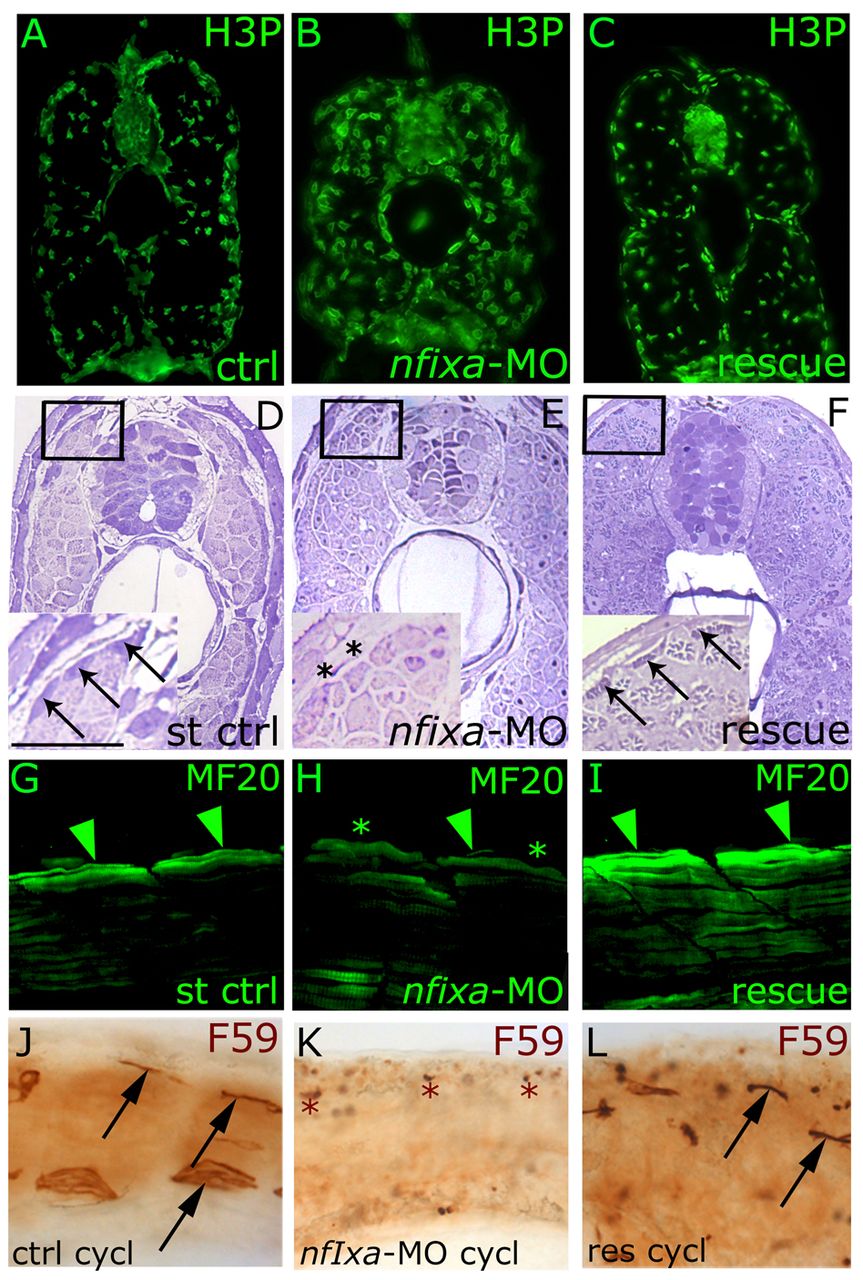Fig. 6 Secondary slow fibers do not form in nfixa-MO-injected embryos. (A-C) Immunohistochemistry experiments with the H3P antibody that recognizes proliferating cells. nfixa-MO-injected larvae (B) presented an increased rating of proliferation at 3 dpf in comparison with controls (A) and rescued larvae (C). (D-I) Secondary fibers at the dorsal and ventral extremes of the superficial muscle monolayer did not form in 3 dpf nfixa-MO-injected embryos (E,H, asterisks) in comparison with controls (D,G, arrows and arrowheads), whereas they are recovered in rescued embryos (F,I, arrows and arrowheads). (D-F) Histological semi-thin sections, inset shows higher magnification. (G-I) Confocal images of MF20 immunostaining. (J,K) Lateral views of F59 labeling, which is maintained in the extreme dorsal and ventral regions of embryos treated with cyclopamine (arrows) but absent in nfixa-MO-injected embryos (K, asterisks). (L) In rescued embryos treated with cyclopamine, the formation of secondary fibers is partially recovered in small areas (arrows). (A-F) Transverse sections, dorsal on top. (G-L) Lateral views, anterior is always towards the left. Scale bar: 100 μm.
Image
Figure Caption
Figure Data
Acknowledgments
This image is the copyrighted work of the attributed author or publisher, and
ZFIN has permission only to display this image to its users.
Additional permissions should be obtained from the applicable author or publisher of the image.
Full text @ Development

